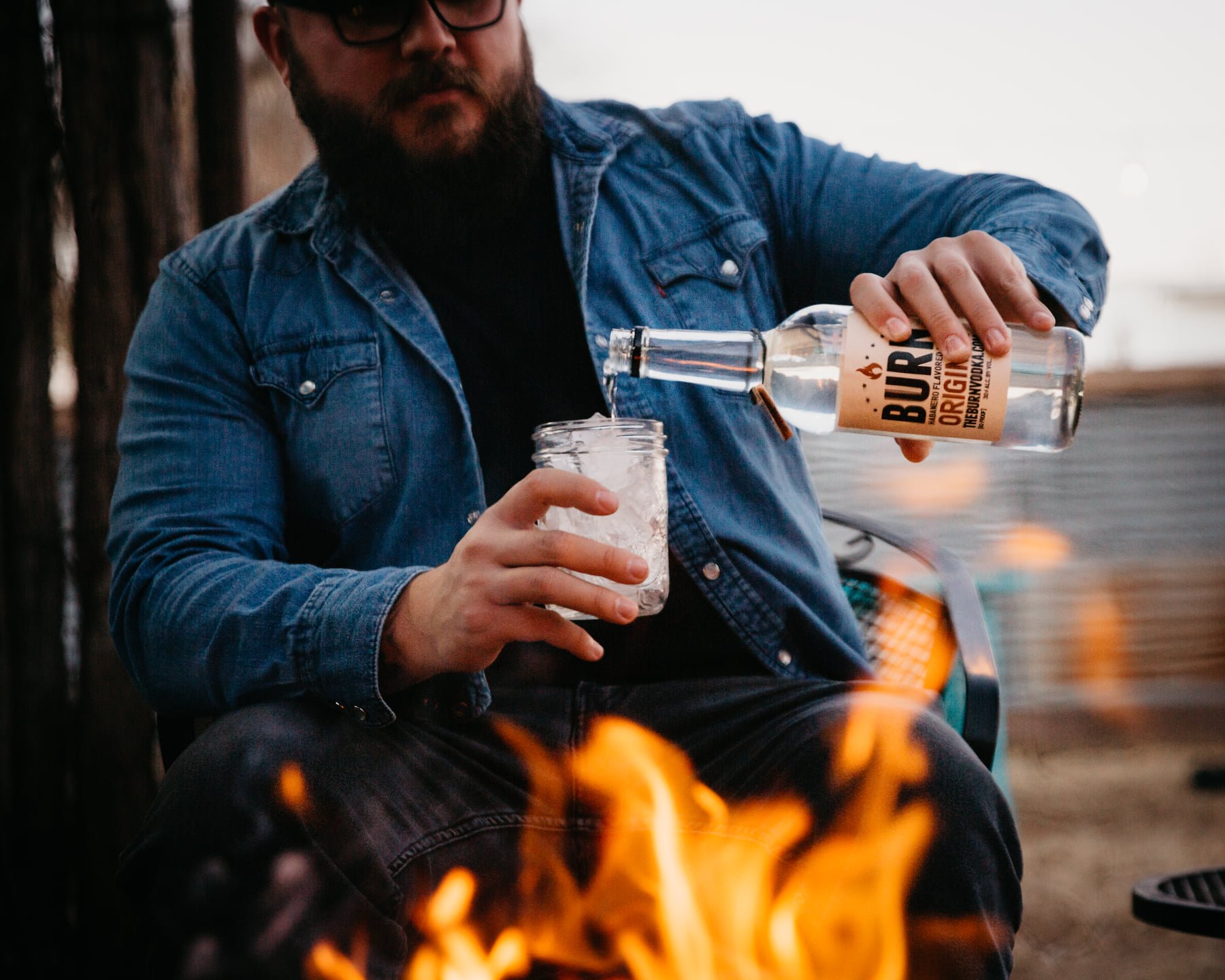
BURN Habanero Vodka
OUR CRAFT
1. In the beginning
The BURN idea originated in the fall of 2003 at the Blue Light (Lubbock, TX) with a Chocolate Habanero squeezed into a bottle of vodka.
The goal was to have something unusual to taste at the end of the year. Unusual does not even begin to describe the result. One-quarter of a shot of that vodka turned out to be amazing. It did have a slightly delayed kick - as expected from a Habanero - but we could also taste the sweetness of the fruit while its oils and tannins gave it a long-lasting and oh-so-pleasant aftertaste.
Keeping a bottle or two with a pepper in it became a part of life at the Blue Light.
2. The first BURN shots
Before long—
Dustin started to experiment with flavored shots: apple-burn, pickle-burn, peach-burn, grape-burn///
Burn shots became the hottest-sellers at the bar. Just half a dose of Burn vodka in a shot typically results in:
‘OMG’ and, a little later, ‘I want another one’.
It became necessary to produce large quantities of a some kind of habanero concentrate in order to satisfy the growing demand. Letting fresh peppers soak in a bottle of vodka for months is simply not an efficient process.
3. Concentrates
We experimented with combinations of Habaneros and its hotter cousins (Ghost, Scorpion, Reaper…). A lot of trail-and-error (mostly error) led to an acceptable concentrate.
However, it still had to be properly mixed with vodka. The bartenders at the Blue Light are well trained to produce Burn vodka. But bartenders at other locations are not used to it. They get busy, mix drinks in a hurry, and a small error with a Habanero concentrate has consequences. It had to produce a ready-to-drink product rather than just one of the ingredient, and one that had to be handled carefully.
We contacted several distilleries, but they showed little enthusiasm for using fresh peppers. Their preference was to produce an artificially-flavored vodka. But every sample we tasted failed to reproduce the expected ‘habanero delay’, had a chemical smell, lacked the desired aftertaste, or had some other fundamental flaw. Producing a synthetic copy that does not taste right from beginning to end had no appeal to us. We do like fresh peppers.
Thus, the first attempt at commercialization was shelved.
You win some, you lose some. Life goes on.
4. Pinkerton + hydroponic farming
Things changed when Lucas established the Pinkerton Distillery just south of Lubbock, TX.
He was all in favor of fresh produce, but judged our concentrate to be too dilute. We went back to the drawing board and produce a ‘3X’ fresh-pepper concentrate. It has now evolved even further.
After testing many vodka options and blending methods, we settled on this 60-proof vodka distilled from locally-grown corn. The fermented grain is 16 times distilled to reach 192-proof and then cut with RO-water down to the desired alcohol concentration. A fixed amount of concentrate is added during bottling.
Thus, each bottle has a little cloudiness because of minute traces of peppers. We could filter them out but decided not to do so: These traces of fresh peppers are part of the Burn experience. Just shake the bottle and enjoy. So far, most of our peppers have been grown from seed in Lubbock.
More peppers will soon be produced in an amazing hydroponic farm in Amarillo: “Reinventing The Weal.”




